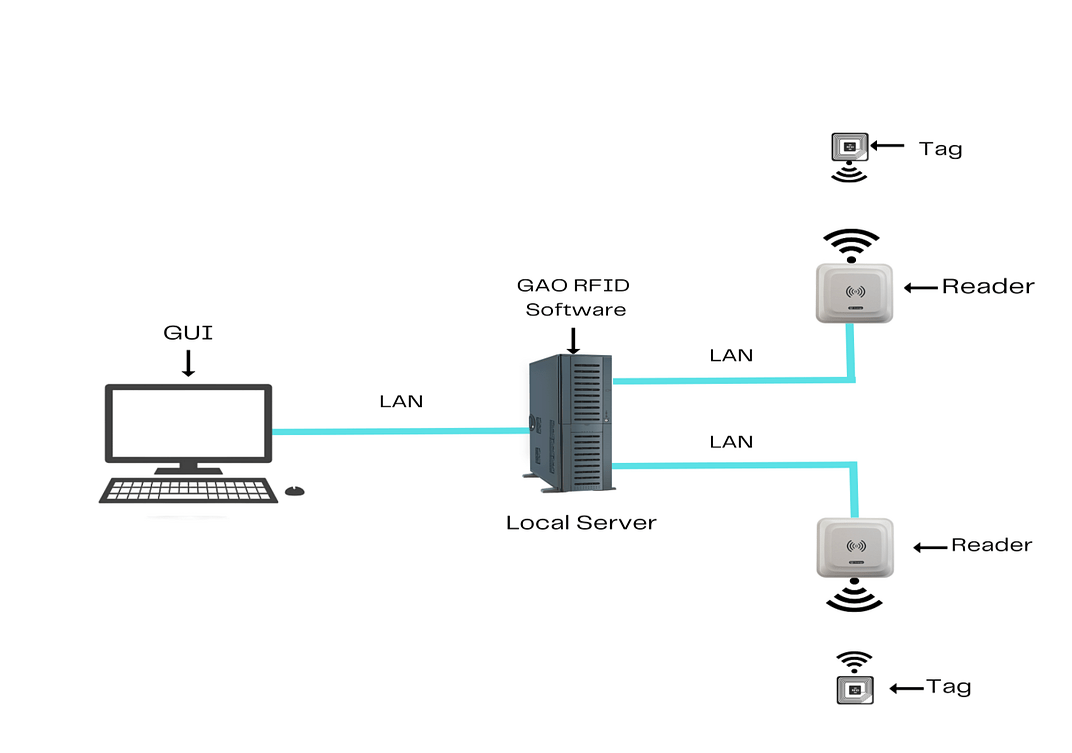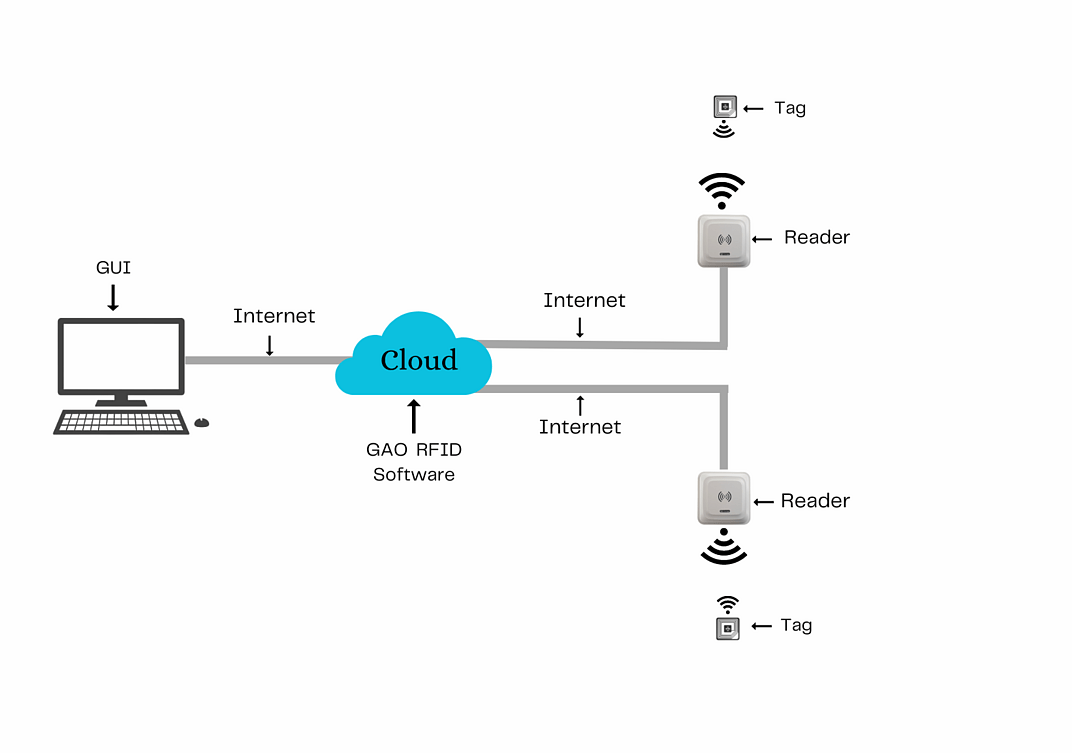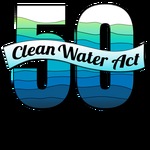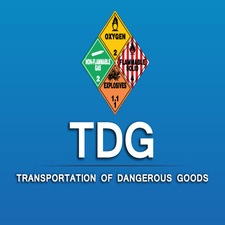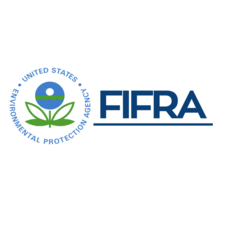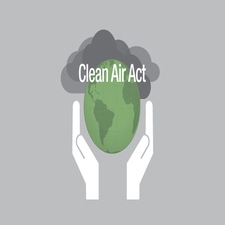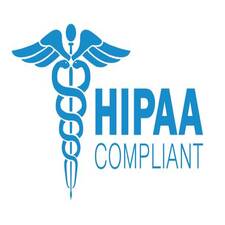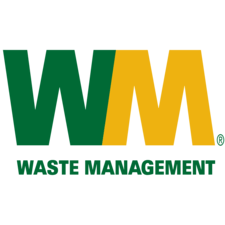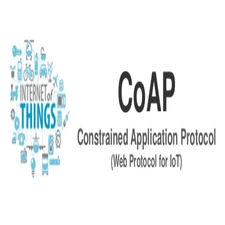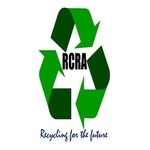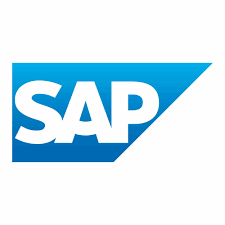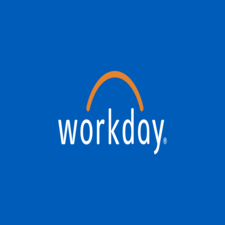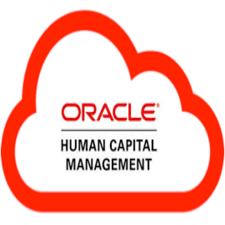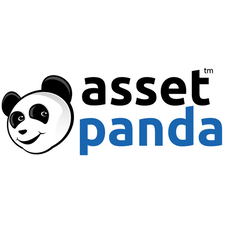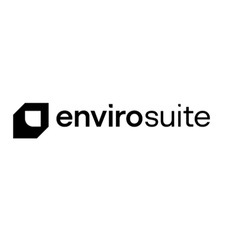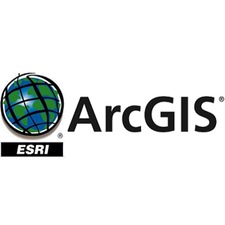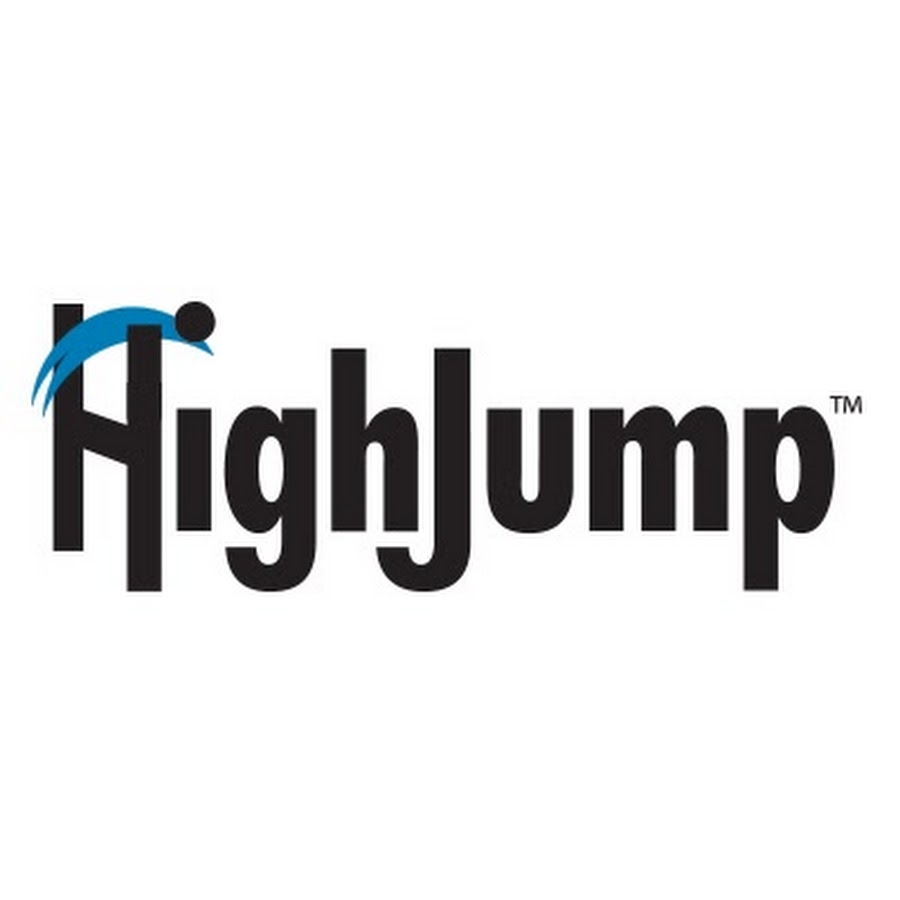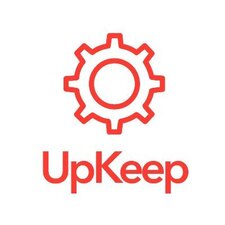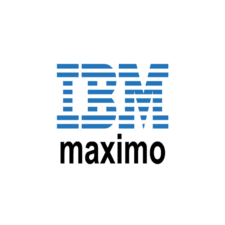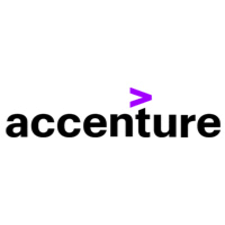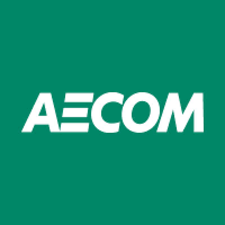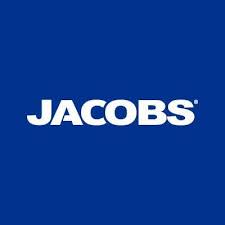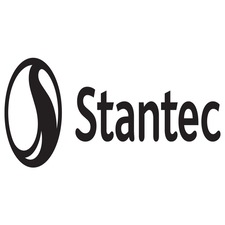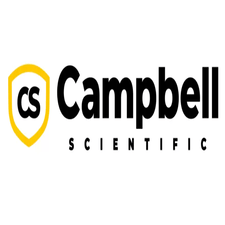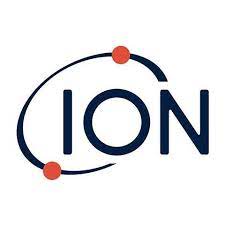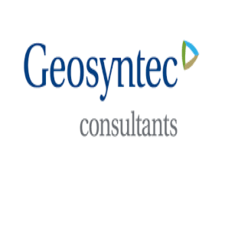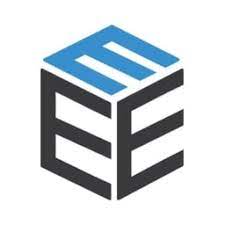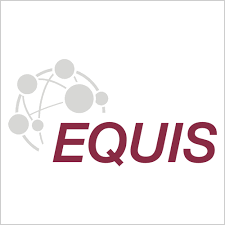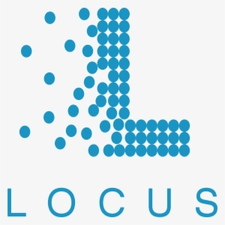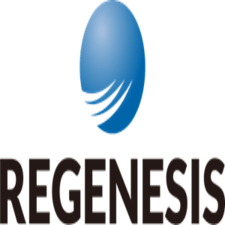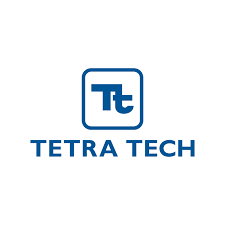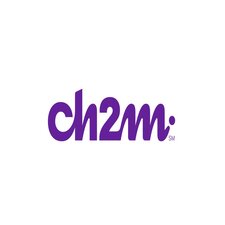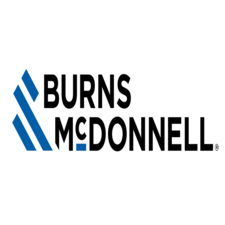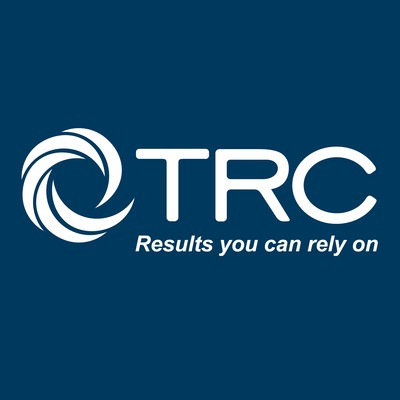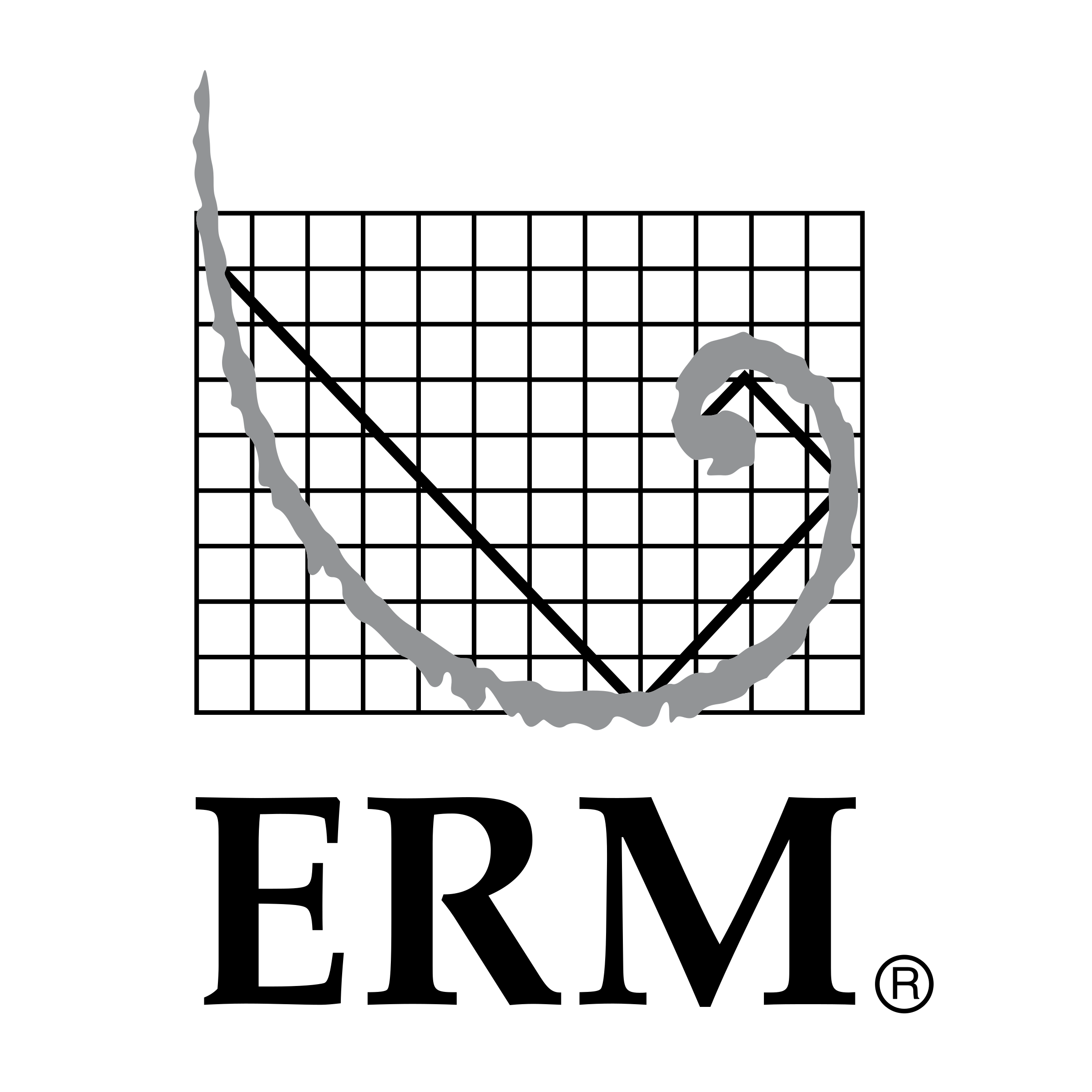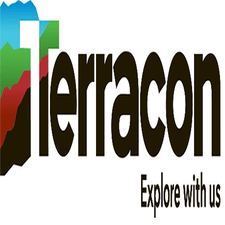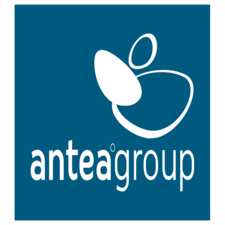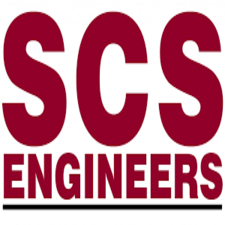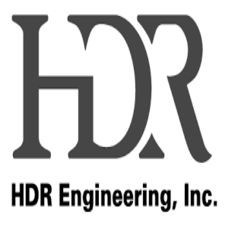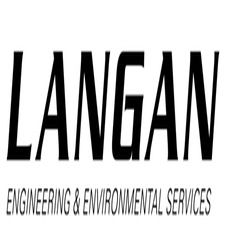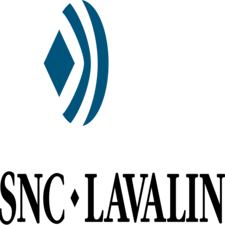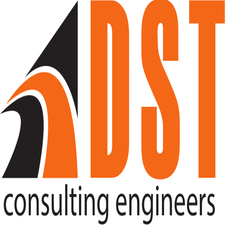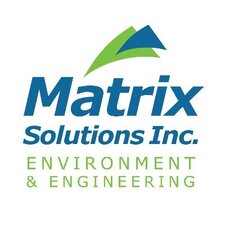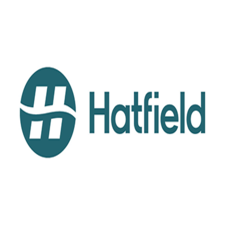Index
Applications & Benefits of GAO’s RFID, BLE, lot & Drones for the Assessment and Remediation
GAO Helps Customers Comply with Standards, Mandates & Regulations of Site Assessment and Remediation
GAO Software Provides Easy Integration with API
Case Studies of RFID Applications
GAO RFID Systems & Hardware for the Site Assessment and Remediation
Overview
The site assessment and remediation industry focuses on identifying and addressing environmental contamination at various sites. It involves the evaluation of soil, water, and air quality to identify potential risks and develop strategies for cleanup and restoration. Professionals in this field conduct site investigations, collect samples, and analyze data to determine the extent and nature of contamination. They then design and implement remediation plans, which may involve techniques such as excavation, soil vapor extraction, groundwater treatment, and containment systems.
GAO’s RFID, BLE, IoT, and drone technologies have helped its customers in the site assessment and remediation Industry to improve their work processes, their operations and productivity by better management of their staff, materials and operational equipment such as soil probes, core samplers, groundwater pumps, air sampling devices, PH meters, conductivity meters, gas analyzers, portable spectrometers, groundwater monitoring wells, gas detectors, data loggers, backhoes, bulldozers, pumps, filters, gas chromatographs and containment systems.
Ranked as one of the top 10 global RFID suppliers, GAO RFID Inc. is based in New York City, U.S. and Toronto, Canada. GAO offers a comprehensive selection of UHF, HF (including NFC) and LF RFID (radio frequency identification) readers and tags, BLE (Low Energy Bluetooth) gateways and beacons, and various RFID and BLE systems such as people tracking, asset tracking, access control, parking control, fleet management, WIP (work in progress), and traceability. Such RFID and BLE products and systems, as well as its IoT and drone technologies, have been successfully deployed for the site assessment and remediation Industry
Applications & Benefits of GAO’s RFID, BLE, lot & Drones for the Site Assessment and Remediation
To satisfy its customers, GAO’s RFID or RFID Systems for the site assessment and remediation are offered in 2 versions. One version is that its software is running on a local server, and another version is that its software runs in the cloud. The above illustrates GAO system for the site assessment and remediation with its software running on a local server
GAO’s RFID technologies bring the many benefits to the site assessment and remediation industry
-
Inventory Management: GAO’s RFID tags can be attached to equipment, tools, and materials, enabling real-time tracking and inventory management. This improves the accuracy of asset tracking, reduces manual errors, and helps prevent loss or theft.
-
Enhanced Visibility: Our RFID technology provides real-time visibility into the location and status of various items and assets across the site. This visibility helps project managers monitor progress, optimize workflows, and make informed decisions based on accurate data.
-
Streamlined Maintenance: GAO’s RFID tags can be affixed to equipment, machinery, and infrastructure, enabling proactive maintenance, and streamlining repair processes which makes maintenance tasks to be scheduled more effectively, reducing downtime and extending the lifespan of assets.
-
Data Collection and Analysis: Our RFID technology provides a wealth of data on asset movements, usage patterns, and performance metrics and this data can be analyzed to identify inefficiencies, optimize resource allocation, and improve overall operational effectiveness.
-
Chain of Custody Management: GAO’s RFID products can be used to track and monitor the movement of hazardous materials, waste, and samples throughout the site which improves the accuracy and traceability of the chain of custody.
-
Remote Monitoring: Our RFID solution can be integrated with remote monitoring systems, allowing real-time tracking and data collection from multiple sites. This capability enables centralized monitoring and management of various projects, enhancing efficiency and reducing the need for on-site visits.
GAO’s BLE technologies offer longer reading range and particularly attractive for applications with larger workspaces within the site assessment and remediation industry
-
Proximity Detection: GAO’s BLE technology allows for proximity detection and tracking of personnel and equipment within a site. This enables improved safety by notifying workers when they are near hazardous areas or equipment, reducing the risk of accidents.
-
Indoor Positioning: Our BLE beacons placed strategically throughout the site can enable indoor positioning and navigation for workers and equipment which helps to improve efficiency by providing accurate directions and reducing time spent searching for specific areas or assets.
-
Geofencing: GAO’s BLE product allows for the creation of geofences, virtual boundaries that trigger alerts or actions when a device or person enters or exits a specific area.
-
Worker Health and Safety: Our BLE wearables or badges can monitor vital signs, body temperature, or other health-related parameters to ensure worker safety and well-being which is used to detect early signs of fatigue, stress, or health emergencies, allowing for timely intervention and prevention of accidents.
-
Task Management and Workflow Optimization: GAO’s BLE solution can be used to track and manage tasks and workflows on the site that enables real-time updates on task progress, automates notifications and reminders, and facilitates efficient coordination among team members, improving productivity and project management.
-
Compliance and Documentation: Our BLE technology simplifies data collection and automates documentation processes thereby providing accurate timestamps, records activities, and aids in compliance reporting, audit trails, and regulatory documentation, streamlining administrative tasks.
GAOS’s RFID and Drone technologies are often combined, and such solutions offer the following benefits to the site assessment and remediation industry
-
Rapid Site Assessment: GAO’s RFID tags are combined with drones which are equipped with cameras and sensors to capture high-resolution aerial imagery, allowing for rapid site assessment and identification of potential hazards, environmental risks, or areas requiring remediation.
-
Enhanced Environmental Monitoring: Our RFID solutions are combined with drones equipped with environmental sensors and cameras to collect data on various parameters, such as air quality, temperature, or pollutant levels, across the site.
-
Improved Site Planning and Design: Drones combined with GAO’s RFID tags can capture detailed topographic and terrain data, enabling precise mapping and 3D modeling of the site.
-
Cost and Time Savings: The combination of our RFID and drones can lead to significant cost and time savings. Rapid site assessments, efficient asset tracking, and streamlined data collection contribute to improved operational efficiency and ultimately reducing project costs and timelines.
-
Improved Collaboration and Communication: Aerial data captured by drones, along with GAO’s RFID-tagged asset information, can be easily shared and accessed by stakeholders, enabling better collaboration and communication among project teams, contractors, and clients. This fosters a more streamlined and coordinated approach to site assessment and remediation projects.
-
Regulatory Compliance: The use of GAO’s RFID and drones can assist in compliance with regulatory requirements and reporting. Accurate and comprehensive data collection, coupled with aerial imagery and asset tracking, helps ensure adherence to environmental regulations, safety standards, and reporting obligations.
Here are benefits of GAO’s IoT technologies to the site assessment and remediation industry
-
Real-Time Monitoring: GAO’s IoT sensors can be deployed across the site to continuously monitor various parameters such as air quality, temperature, humidity, noise levels, and vibration. Real-time data collection allows for prompt detection of environmental risks, enabling timely remediation actions.
-
Predictive Maintenance: Our IoT products can monitor the performance and condition of equipment, machinery, and infrastructure. By analyzing the collected data, predictive maintenance models can be developed to detect potential failures or maintenance requirements in advance.
-
Improved Safety: GAO’s IoT devices can be used to monitor worker safety by tracking their locations, detecting falls or accidents, and monitoring vital signs.
-
Environmental Impact Assessment: Our IoT technology enables continuous monitoring and data collection on factors such as energy consumption, waste generation, and resource usage which can be utilized for environmental impact assessments, allowing for informed decision-making and the implementation of sustainable practices during site assessment and remediation activities.
-
Workflow Optimization: IoT solution can facilitate workflow automation by enabling the seamless integration of data across different processes. This allows for streamlined communication, better coordination between teams, and automated task management, resulting in improved efficiency and productivity
GAO Helps Customers Comply with Standards, Mandates & Regulations of Site Assessment and Remediation
GAO RFID Inc. has helped many companies in the site assessment and remediation Industry to deploy RFID, BLE, IoT and drone systems and to ensure such deployments comply with the applicable industry standards, mandates, and government regulations:
RFID, BLE, IoT, & Drone Standards & Mandates
-
ASTM E2279: This standard, developed by the American Society for Testing and Materials (ASTM), provides guidelines for using RFID technology in the identification and management of hazardous materials. It covers the use of RFID tags to track hazardous materials and includes considerations for tag placement, data storage, and compatibility with existing systems.
-
Bluetooth Core Specification: The Bluetooth Core Specification defines the fundamental protocols, profiles, and procedures for Bluetooth wireless technology, including Bluetooth Low Energy. It establishes the technical requirements for BLE devices and their interoperability.
-
AltBeacon: This is an open-source beacon format maintained by the Radius Networks community. It provides a standardized structure for BLE beacon transmissions, allowing interoperability between various BLE devices and commonly used for location-based services and asset tracking.
-
CoAP (Constrained Application Protocol): CoAP is a lightweight application-layer protocol designed for constrained IoT devices and networks. It enables efficient communication between devices with limited resources, such as low power and low bandwidth. CoAP is often used for data exchange in resource-constrained environments, making it relevant to site assessment and remediation applications.
-
Transport Canada TP 15263: TP 15263 is a Transport Canada document that provides guidance for the operation of drones in Canada. It covers topics such as drone pilot certification, flight operations, and safety guidelines for different drone categories, including those used in site assessment and remediation applications.
-
California Consumer Privacy Act (CCPA): CCPA is a privacy law in California, United States, that provides certain rights to California residents regarding the collection and use of their personal information by businesses. Although not RFID-specific, it applies to the handling of personal data, including data collected through RFID systems, by businesses operating in California.
-
Health Insurance Portability and Accountability Act (HIPAA): HIPAA is a US federal law that sets standards for the protection and privacy of individually identifiable health information. In certain situations, RFID technology may be used to track medical equipment, assets, or patient information, which would fall under HIPAA regulations.
US. Government Regulations
-
Comprehensive Environmental Response, Compensation, and Liability Act (CERCLA): CERCLA, also known as Superfund, is a federal law that addresses the cleanup of hazardous substance releases and the allocation of liability for the costs associated with remediation.
-
Resource Conservation and Recovery Act (RCRA): RCRA is a federal law that governs the management of hazardous and non-hazardous solid waste. It regulates the storage, treatment, transportation, and disposal of waste materials generated during site assessment and remediation projects.
-
Clean Water Act (CWA): The CWA is a federal law that regulates the discharge of pollutants into U.S. waters, including rivers, lakes, and coastal areas. It establishes standards for water quality and requires permits for the discharge of pollutants from site assessment and remediation activities that may impact water bodies.
-
Clean Air Act (CAA): The CAA is a federal law that regulates air emissions, aiming to protect air quality and public health. It imposes requirements on the management of air emissions generated during site assessment and remediation projects, particularly when dealing with air pollutants such as volatile organic compounds (VOCs).
-
National Environmental Policy Act (NEPA): NEPA is a federal law that requires federal agencies to consider the environmental impacts of their actions. Site assessment and remediation projects involving federal funding or permits may require compliance with NEPA’s requirements, including environmental impact assessments and public involvement.
-
Federal Insecticide, Fungicide, and Rodenticide Act (FIFRA): FIFRA is a federal law that regulates the registration, sale, and use of pesticides. If pesticides are used in site assessment and remediation activities, compliance with FIFRA regulations is necessary to ensure proper handling, storage, and application of these chemicals.
Canadian Government Regulations
-
Canadian Environmental Protection Act, 1999 (CEPA): CEPA is a federal law that addresses the protection and management of the environment and human health. It provides the framework for assessing and managing substances that may be toxic to the environment or human health, including those encountered during site assessment and remediation activities.
-
Fisheries Act: The Fisheries Act is a federal law that protects fish and fish habitat in Canada. It regulates activities that may result in harm to fish and their habitat, including impacts from site assessment and remediation projects near water bodies.
-
Canadian Environmental Assessment Act, 2012 (CEAA): CEAA provides a framework for conducting environmental assessments of proposed projects that may have significant environmental effects. Site assessment and remediation projects that meet the criteria for triggering an environmental assessment may be subject to this legislation.
-
Transportation of Dangerous Goods Act: This federal legislation governs the transportation of hazardous materials, including hazardous substances and waste that may be encountered during site assessment and remediation activities. It sets requirements for the classification, packaging, labeling, and transportation of dangerous goods.
-
Waste Management Regulations: Waste management regulations at the federal, provincial, and territorial levels govern the handling, transportation, and disposal of various types of waste generated during site assessment and remediation projects. These regulations aim to ensure proper waste management practices and prevent environmental contamination.
-
Spill Reporting and Response Regulations: Provinces and territories in Canada have specific regulations governing the reporting and response requirements for spills of hazardous materials. These regulations may apply to spills that occur during site assessment and remediation activities and require immediate reporting and appropriate cleanup measures.
GAO Software Provides Easy Integration with API
GAO’s RFID and BLE software offers a free trial for both the server-based and cloud versions, and offers an API to the important systems in the site assessment and remediation such as:
Personnel Management:
-
Workforce scheduling and assignment
-
Skills and certification tracking
-
Time and attendance tracking
-
Safety training and compliance management
-
Performance evaluation and feedback
-
Resource allocation and utilization tracking
Equipment Management:
-
Equipment tracking and inventory management
-
Preventive maintenance scheduling and tracking
-
Calibration and inspection management.
-
Equipment utilization monitoring
-
Asset tracking and security measures
-
Restricted access to hazardous areas
-
Visitor management and control
-
Identity verification and authentication
-
Monitoring and logging access activities
-
Integration with surveillance and alarm systems
Warehouse Management:
-
Storage location management
-
Material handling and tracking
-
Barcode or RFID-based item identification
-
Order fulfillment and picking optimization
-
Receiving and shipping management
Supply Chain Management:
-
Supplier relationship management
-
Procurement and purchasing management
-
Demand forecasting and inventory planning
-
Logistics and transportation management
-
Supplier performance monitoring and evaluation
-
Supplier quality assurance and compliance
Other Applications:
-
Data management and analysis for site assessments and remediation projects
-
Environmental monitoring and data collection
-
Compliance tracking with environmental regulations and permits
-
Reporting and documentation management
-
Collaboration and communication tools for project teams
-
Real-time monitoring and control of remediation systems
GAO has enabled its customers to make use of some of leading software and cloud services in the site assessment and remediation industry. Below are some of popular software and cloud services in the site assessment and remediation industry:
-
Oracle HCM Cloud: This offers comprehensive personnel management capabilities, including workforce scheduling, skills tracking, time, and attendance management.
-
ADP Workforce Now: It is a cloud-based solution that provides features such as time and attendance tracking, workforce scheduling, and performance management.
-
SAP SuccessFactors: This is for a suite of human capital management solutions, including personnel management functionalities like skills tracking, performance evaluation, and training management.
-
IBM Maximo: This is an enterprise asset management (EAM) solution that includes equipment management functionalities like asset tracking, preventive maintenance scheduling, and work order management.
-
Dude Solutions: This offers a range of solutions for facility and maintenance management, including equipment tracking, preventive maintenance, and work order management.
-
Fiix CMMS: This is a cloud-based maintenance management solution that includes equipment management capabilities such as maintenance scheduling, asset tracking, and inventory management.
-
Asset Panda: This is an asset tracking and management platform that can be used for equipment management, including tracking equipment location, maintenance history, and inspections.
-
BambooHR: This is a cloud-based HR software solution that provides personnel management functionalities such as employee onboarding, time-off tracking, and performance management.
-
UpKeep: It is a cloud-based maintenance management platform that includes equipment management features like work order management, asset tracking, and preventive maintenance scheduling.
-
HighJump Warehouse Edge: This is a warehouse management system that offers features such as inventory control, picking optimization, and real-time visibility.
-
ESRI ArcGIS: It is a powerful geographic information system (GIS) software that offers tools for data collection, analysis, and visualization. It is widely used in the site assessment and remediation industry for mapping, spatial analysis, and environmental data management.
-
EarthSoft EQuIS Remediation: This is a specialized software solution for managing and tracking environmental remediation projects. It provides features for work plan management, data analysis, regulatory compliance, and reporting.
-
EnviroSuite: This is an environmental management software that offers real-time monitoring and predictive analytics for assessing and managing environmental risks. It provides tools for air quality monitoring, noise management, and weather forecasting.
-
Accela Environmental Health and Safety (EHS): It is a cloud-based software platform that helps organizations streamline and automate environmental health and safety processes. It offers modules for managing permits, inspections, incidents, and compliance
GAO has worked with some of the leading technology companies in the site assessment and remediation industry to provide integrated RFID, BLE, IoT and drone solutions to customers. Here are some of the technology leaders in site assessment and remediation industry:
-
Accenture: This is a global professional services company that provides consulting, technology, and outsourcing services. They offer expertise in areas such as digital transformation, data analytics, and software development, which can be leveraged in the site assessment and remediation industry.
-
AECOM: This is a multinational engineering firm that provides design, consulting, and project management services. They have expertise in environmental assessment, site remediation, and data management for the site assessment and remediation industry.
-
Jacobs: This is a global provider of technical, professional, and construction services. They offer expertise in environmental consulting, remediation, and information technology solutions for the site assessment and remediation industry.
-
Environmental Resources Management (ERM): This company is a leading global provider of environmental, health, safety, risk, and social consulting services. They provide expertise in environmental assessment, remediation, and digital solutions for the site assessment and remediation industry.
-
Stantec: Stantec is a global professional services firm that specializes in engineering, architecture, and environmental consulting. They offer services in environmental assessment, remediation, and information technology solutions for the site assessment and remediation industry.
-
Campbell Scientific: This company specializes in measurement and control systems, offering data loggers, sensors, and environmental monitoring equipment. Their solutions can be applied to various site assessment and remediation applications, including weather monitoring and data collection.
-
Ion Science: Ion Science specializes in gas detection and monitoring equipment. Their portable gas detectors and photoionization detectors (PIDs) are utilized in environmental investigations, leak detection, and hazardous substance monitoring during site assessments.
-
Geosyntec Consultants: They offer a range of environmental and engineering services, including innovative technology solutions for site assessment and remediation.
-
Envirosoft Corporation: The company specializes in software solutions for environmental data management, including site assessment and remediation. They offer platforms for data collection, analysis, and reporting, enabling efficient management of environmental projects.
-
EQuIS by EarthSoft: This is a comprehensive environmental data management system designed for the site assessment and remediation industry. It offers modules for data collection, sample management, regulatory compliance, and reporting.
-
EHS Data: This provides environmental data management software solutions for the site assessment and remediation industry.
-
Locus Technologies: This offers cloud-based environmental management software for site assessment and remediation. Their solutions provide modules for environmental data management, compliance tracking, and reporting.
-
EON Geosciences: This provides integrated data management and visualization software for the environmental and geotechnical sectors. Their solutions enable effective management and analysis of geospatial data for site assessment and remediation projects.
-
REGENESIS: It offers a range of innovative remediation technologies and software solutions for the site assessment and remediation industry.
-
Synergistix: This company provides software solutions for field data collection, sample tracking, and laboratory information management in the environmental industry. Their solutions can streamline data management processes during site assessments and remediation projects.
Case Studies of RFID Applications
Here are some case studies of RFID application in site assessment and remediation:
EQM is an environmental consulting and remediation firm based in the USA that has incorporated RFID technology into its operations to enhance efficiency and data management in the field. It uses RFID tags to track and manage soil and groundwater samples during site assessments. Each sample container is tagged with an RFID tag containing a unique identifier. This allows field technicians to quickly and accurately scan and record sample information, including location, collection date, and other relevant data. Furthermore, it uses RFID tags to track and manage equipment and tools utilized during site assessments and remediation projects. Equipment such as monitoring devices, pumps, and field instruments are tagged with RFID tags. RFID technology assists EQM in inventory management of consumables and materials used in site assessment and remediation activities. By tagging items such as chemicals, safety gear, and other supplies, EQM can track their usage, monitor stock levels, and streamline reordering processes. This helps to avoid shortages or excess inventory, optimizing resource allocation and reducing costs.
Eco-Edge Environmental Consulting is an environmental services company based in Canada that has implemented RFID technology to improve efficiency and data management in their operations. It uses RFID tags to track and manage their equipment and assets deployed at project sites. Each item, such as monitoring instruments, pumps, and remediation equipment, is tagged with an RFID tag containing a unique identifier. The RFID readers are used to scan and record the location, condition, and maintenance history of the assets. This enables efficient asset management, reduces the risk of loss or misplacement, and ensures timely maintenance or calibration. RFID technology is also employed to streamline the tracking and management of soil and groundwater samples during site assessments. RFID tags are affixed to sample containers, and handheld RFID readers are used to scan and record sample information, including location, collection date, and associated data. This facilitates accurate sample tracking, eliminates manual errors, and supports efficient data management throughout the assessment and remediation process.
ESG is an environmental services company based in the USA that has implemented UHF RFID technology to enhance their operations and improve data management in the field. It uses UHF RFID tags to track and manage their equipment and assets deployed during site assessments and remediation projects. Each asset, such as monitoring instruments, remediation equipment, and field tools, is affixed with a UHF RFID tag. UHF RFID readers are deployed to scan and record asset information, including location, condition, and maintenance history. This enables real-time asset tracking, reduces equipment loss or misplacement, and optimizes asset utilization. UHF RFID technology is employed by ESG to enhance the tracking and management of hazardous waste materials during remediation projects. UHF RFID tags are attached to waste containers, drums, or hazardous material storage areas. UHF RFID readers are used to scan the tags, capturing data such as waste type, quantity, and disposal status. This enables accurate waste tracking, improves compliance with regulations, and enhances documentation for auditing purposes.
GreenTech Environmental Solutions in Canada implemented UHF RFID technology in their site assessment and remediation processes to improve efficiency and data management. It uses UHF RFID tags to track and manage their equipment and assets deployed at project sites. UHF RFID tags have a longer read range compared to other RFID frequencies, allowing for efficient scanning of assets. Each asset, such as remediation equipment, monitoring instruments, and vehicles, is affixed with a UHF RFID tag. UHF RFID readers are employed to scan and record asset information, including location, status, and maintenance history. This enables real-time asset tracking, reduces the risk of loss or theft, and improves asset utilization. It is also utilized to track personnel within site assessment and remediation zones. That is, employees or contractors wear UHF RFID-enabled badges or wristbands that transmit their unique identification information and the UHF RFID readers installed at various checkpoints or access points can detect and log personnel movements. This ensures safety compliance, helps locate personnel in case of emergencies, and enhances overall site security.
GAO RFID Systems & Hardware for the Site Assessment and Remediation
GAO RFID Inc. offers the largest selection of BLE gateways, BLE beacons, RFID readers, tags, antenna, printers, and integrated RFID systems for various industries, including site assessment and remediation.
BLE(Bluetooth Low Energy)
GAO Offers Advanced BLE gateways:
as well as versatile with such important functions as temperature, humility , vibrations, and panic button:
GAO’s BLE technology is suitable for many industries, including site assessment and remediation.
UHF (Ultra High Frequency) RFID
GAO offers the largest selection of UHF RFID readers for various industries, including site assessment and remediation:
GAO RFID offers the widest choice of UHF RFID tags, labels, badges, wristbands for various industries, including site assessment and remediation:
and an array of antennas to address different applications:
HF (High Frequency), NFC (Near Field Communications) and LF (Low Frequency) RFID
GAO offers the largest selection of HF, NFC, and LF RFID readers for various industries, including site assessment and remediation:
- High Frequency 13.56 MHz Passive RFID Readers
- Low Frequency 134 kHz Passive RFID Readers
- Low Frequency 125 kHz Passive RFID Readers
HF, NFC and LF RFID tags, labels, badges, wristbands for various industries, including site assessment and remediation:
and antennas:
GAO also offers RFID printers:
Digital I/O adapters:
and relay controllers:
For embedded applications, GAO offers UHF, HF and LF RFID reader modules:
- UHF 860 – 960 MHz RFID Modules
- 13.56 MHz High Frequency RFID Modules
- 125 kHz Low Frequency RFID Modules
The RFID systems by GAO are highly popular for clients in the warehouse and storage:
Physical asset or operational equipment tracking system:
Assets that can be effectively tracked using GAO’s technologies include:
-
Ground Penetrating Radar (GPR): GPR systems use electromagnetic waves to create subsurface images, helping to identify buried structures, utilities, and soil anomalies.
-
Soil Vapor Extraction (SVE) Systems: SVE systems are used for extracting volatile contaminants from the soil by applying a vacuum to the subsurface, facilitating remediation of contaminated sites.
-
Air Sparging Systems: Air sparging involves injecting air into the groundwater to strip volatile contaminants and enhance biodegradation processes.
-
Dual Phase Extraction (DPE) Systems: DPE systems combine soil vapor extraction and groundwater pumping to remove both soil and groundwater contaminants.
-
Direct-Push Soil Sampling Equipment: Direct-push technology allows for the collection of soil samples and installation of monitoring wells without the need for drilling.
-
High-Volume Air Samplers: These samplers are designed to capture and analyze large volumes of air for the detection of airborne contaminants.
-
Field Screening Equipment: Portable instruments such as X-ray fluorescence (XRF) analyzers, photoionization detectors (PIDs), and flame ionization detectors (FIDs) are used to conduct on-site analysis of soil, water, or air samples for immediate data collection and decision-making.
-
Groundwater Monitoring Systems: This includes multi-level groundwater monitoring systems, which consist of nested monitoring wells that allow for the sampling and characterization of groundwater at different depths.
-
Remediation Treatment Units: These units encompass various technologies such as chemical oxidation systems, bioremediation systems, and activated carbon adsorption systems, which are deployed to treat contaminated soil or groundwater.
-
Sediment Sampling and Dredging Equipment: Specialized equipment such as sediment corers, dredges, and sediment samples are used to collect representative samples and remove contaminated sediments from water bodies.
People or workers tracking system:
Physical asset or operational equipment tracking system:
Personnel or people access control system:
Parking or vehicle control system:
GAO Has Served Site Assessment and Remediation Extensively
GAO’s products and technologies have helped its customers in the site assessment and remediation Industry to achieve success in green remediation, risk-based corrective action (RBCA), integrated site characterization, data analytics and visualization, remediating emerging contaminants, in site remediation technologies, enhanced site characterization, digital transformation, regulatory compliance and risk management, stakeholder engagement and community outreach.
GAO RFID Inc. has deployed RFID, BLE and IoT projects for many companies in the site assessment and remediation, including many in its various divisions such as:
-
Environmental Consulting: Environmental consulting firms provide expertise and services in assessing environmental risks, developing remediation strategies, conducting site investigations, and offering regulatory compliance guidance.
-
Site Investigation and Characterization: This division focuses on the initial assessment and characterization of contaminated sites, including soil, groundwater, and air sampling, geophysical surveys, and the development of conceptual site models.
-
Risk Assessment and Management: These professionals specialize in evaluating potential risks to human health and the environment from contaminated sites, conducting exposure assessments, and developing risk management plans.
-
Remediation Technologies and Engineering: This division focuses on the application of various remediation technologies and engineering solutions to mitigate or remove contaminants from soil, groundwater, sediment, or air. It includes expertise in soil vapor extraction, in situ bioremediation, chemical oxidation, thermal treatment, and other innovative remediation approaches.
-
Regulatory Compliance and Permitting: This sub-industry involves working closely with regulatory agencies to ensure compliance with environmental regulations, obtaining necessary permits, and addressing legal and regulatory requirements associated with site assessment and remediation projects.
-
Emergency Response and Spill Cleanup: Professionals in this division specialize in responding to environmental emergencies, such as chemical spills, oil spills, or hazardous material releases.
-
Brownfield Redevelopment: This sub-industry focuses on the assessment, remediation, and redevelopment of underutilized or contaminated properties, aiming to revitalize and repurpose them for new commercial, residential, or industrial uses.
-
Environmental Data Management and Software Solutions: This division involves the development and implementation of software tools and platforms for data management, analysis, and reporting related to site assessment, remediation, and regulatory compliance.
-
Ecological Restoration: Professionals in this sub-industry focus on restoring ecosystems, including wetlands, rivers, forests, and other natural habitats, that have been impacted by contamination or development activities.
-
Environmental Health and Safety (EHS) Consulting: EHS consultants provide guidance and support in ensuring workplace safety, compliance with health and safety regulations, and the development of environmental management systems.
Here are some of the leading companies in the site assessment and remediation industry


